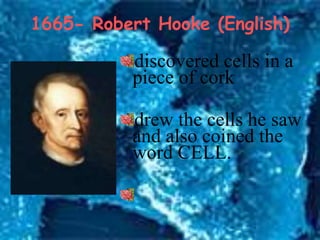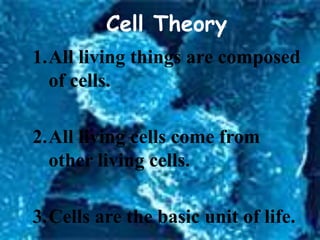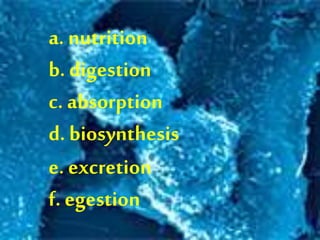- In 1665, Robert Hooke discovered cells in cork and coined the term "cell" from the Latin word "cellula" meaning small compartment. He published his findings in Micrographia.
- In 1674, Anton van Leeuwenhoek observed red blood cells, sperm, bacteria and single-celled organisms using his improved microscope.
- In 1839, Theodor Schwann and Matthias Schleiden established the cell theory - that all living things are composed of cells, all cells come from preexisting cells, and the cell is the basic unit of structure and function in living things.























